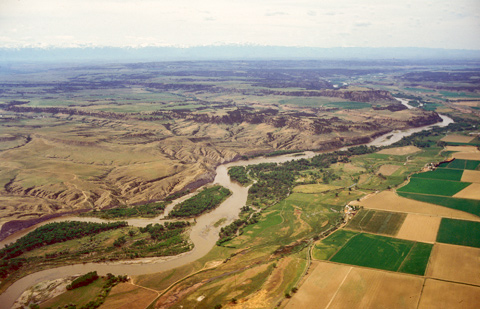One week and a hundred miles after starting down the Yellowstone River, Clark finally found cottonwood trees large enough for building canoes, though they would not quite meet previous standards. “Those trees,” he wrote on 20 July 1806, “appeared tolerably Sound and will make Canoes of 28 feet in length and about 16 or 18 inches deep and from 16 to 24 inches wide.” The men would have to lash them together, catamaran-style, for stability.
Clark’s party made camp at today’s Park City, Montana, and settled in to build the new canoes and attend to other business. While a few of the men took turns with the three axes they had along, some of the rest, being nearly naked, made elk- and deer-skin clothing. Clark himself tended to Private Gibson, who had punctured a thigh on a fallen tree when bucked off his horse. Some of the men hunted, some dried meat, and others looked after the horses. Between chores they rested up.
That night some Indians, presumably Crows, stole half the company’s remaining horses and headed downriver with them. Clark composed a serious lecture, alternating diplomacy with diatribe, to deliver if and when he caught up with the culprits’ chief. On 24 July 1806 Clark and company packed up and took to the river, reaching the Missouri early on 3 August 1806. They never came face-to-face with a single Crow Indian.
For more, see on this site Yellowstone Canoe Camp.
From Discovering Lewis & Clark from the Air
Photography by Jim Wark
Text by Joseph Mussulman
Reproduced by permission of Mountain Press

